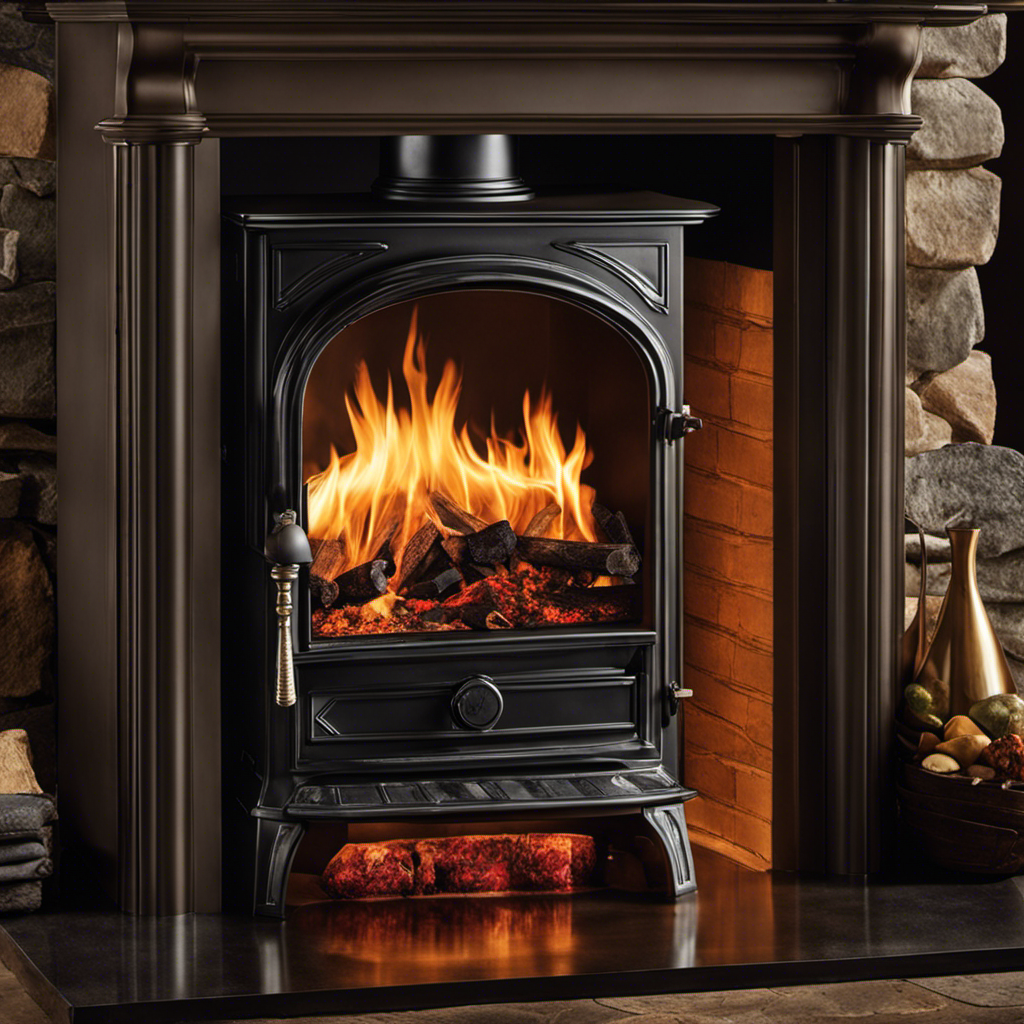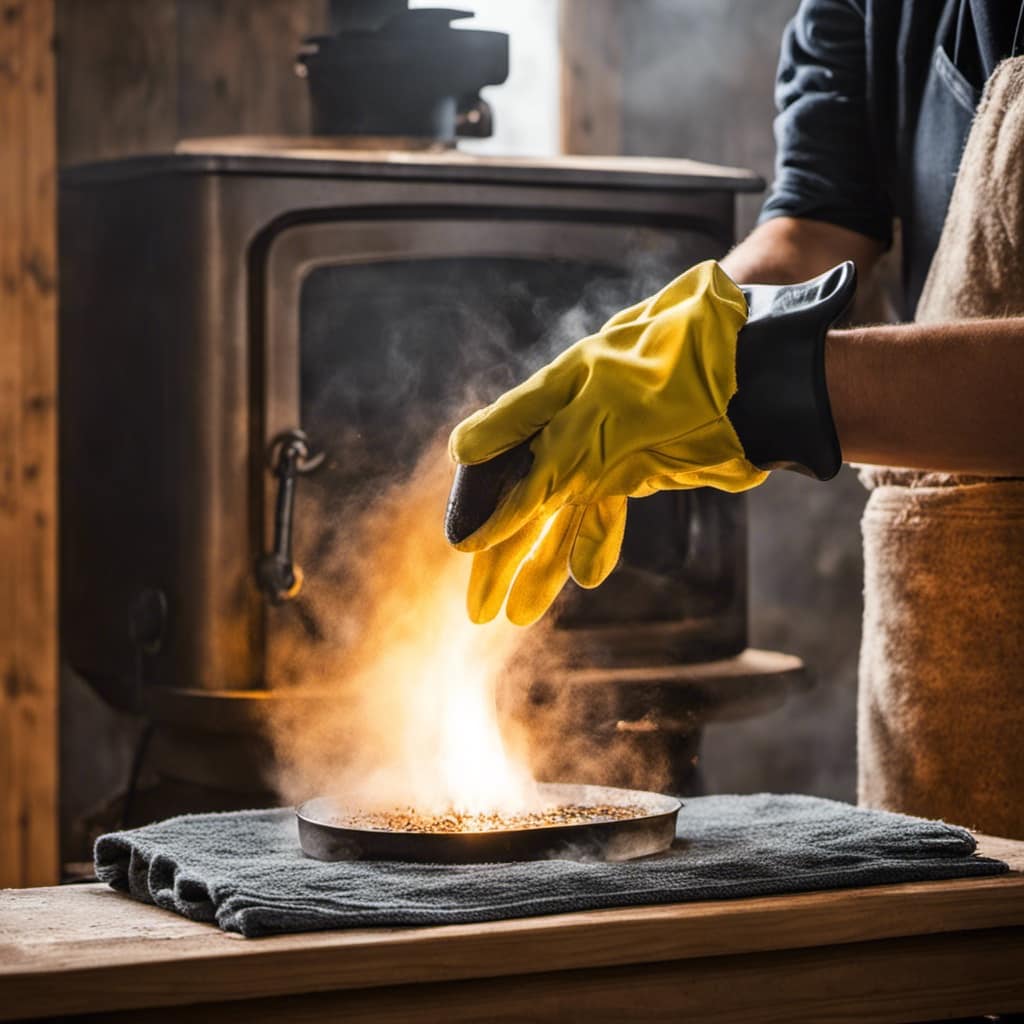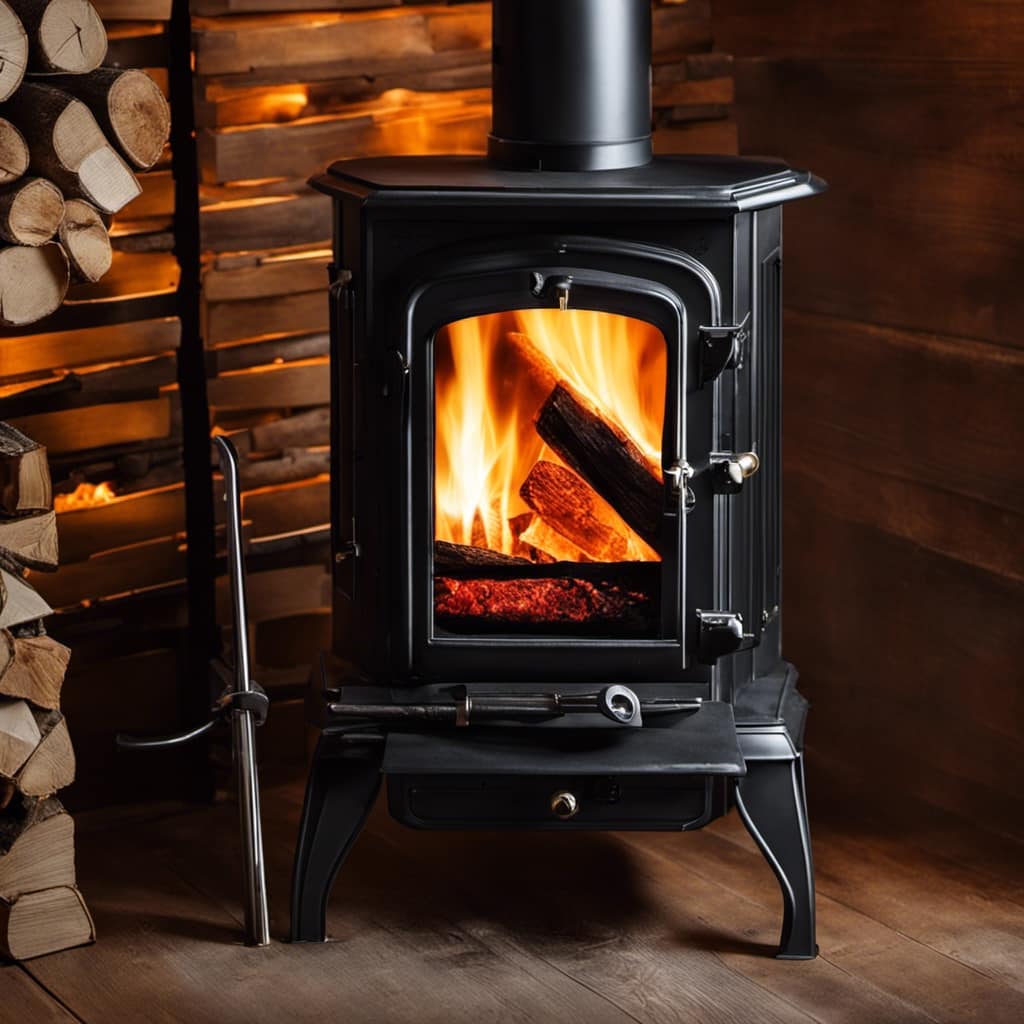
As an owner of a wood stove, I’ve realized the importance of selecting the right chimney pipe size for proper ventilation. It’s similar to finding the perfect puzzle piece—it’s essential for both optimal operation and safety.
In this article, I’ll guide you through the factors to consider and help you calculate the ideal size for your wood stove’s chimney pipe. Avoid common mistakes and discover expert tips to ensure you choose the right chimney pipe for maximum performance.
Key Takeaways
- The size of the chimney pipe should be calculated based on the ventilation needs of the wood stove.
- Proper ventilation is important for removing harmful gases, reducing fire hazards, and improving air quality.
- The ideal chimney pipe size directly affects the performance of the wood stove, so it’s important to avoid choosing a size that is too small or too large.
- When selecting a chimney pipe, consider factors such as BTU rating, flue length, number of elbows, and follow manufacturer guidelines for proper sizing.
Factors to Consider When Sizing Your Chimney Pipe
When sizing your chimney pipe, it’s important to carefully consider all the factors involved.
One of the main factors to consider is calculating the size of the pipe based on the ventilation needs of your wood stove. The size of the pipe is directly related to the amount of heat and smoke that needs to be vented out of your home.

It’s crucial to choose a pipe that has the appropriate diameter and height to ensure proper airflow and prevent the buildup of harmful gases.
Additionally, factors such as the type of fuel used, the length and complexity of the chimney system, and local building codes should also be taken into account when choosing the right chimney pipe.
Understanding the Importance of Proper Ventilation for Wood Stoves
I understand the importance of proper ventilation for wood stoves, so I ensure that my chimney pipe is the correct size and height to safely vent out heat and smoke. Proper ventilation is crucial for maintaining clean air quality in our homes and preventing the harmful effects of poor air circulation. Here are three key reasons why proper ventilation is essential:
Ensures the removal of harmful gases: Poor ventilation can lead to the accumulation of carbon monoxide and other dangerous gases, posing a serious threat to our health.
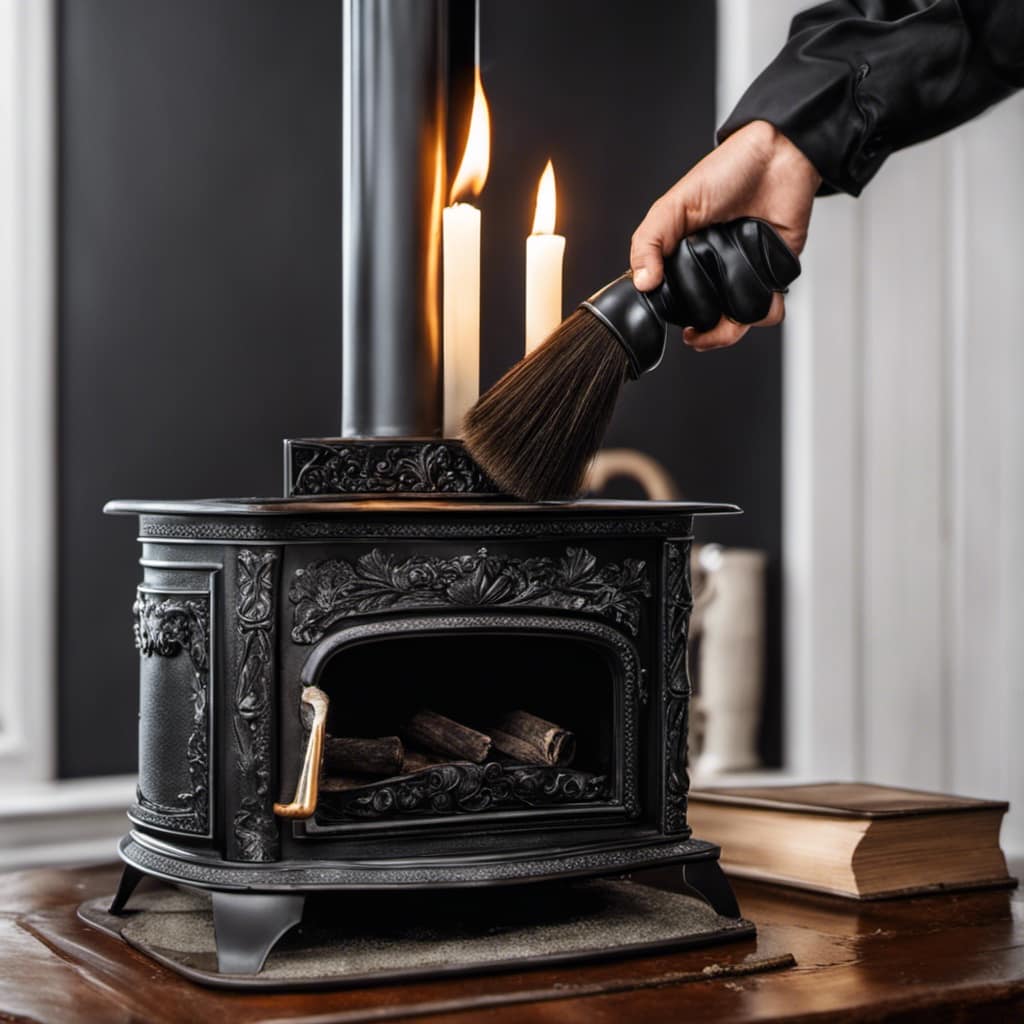
Prevents the buildup of excess heat: Insufficient ventilation can cause excessive heat to accumulate in the house, potentially leading to fire hazards and discomfort.
Reduces the risk of indoor air pollution: Proper ventilation helps to remove airborne pollutants, allergens, and mold, improving the overall indoor air quality.
Understanding the importance of clean air and the impact of poor ventilation, it’s crucial to calculate the ideal chimney pipe size for your wood stove.
Calculating the Ideal Chimney Pipe Size for Your Wood Stove
To ensure proper ventilation, it’s important to calculate your wood stove’s ideal chimney pipe size. Calculating efficiency and maximizing heat output are key factors in this process.
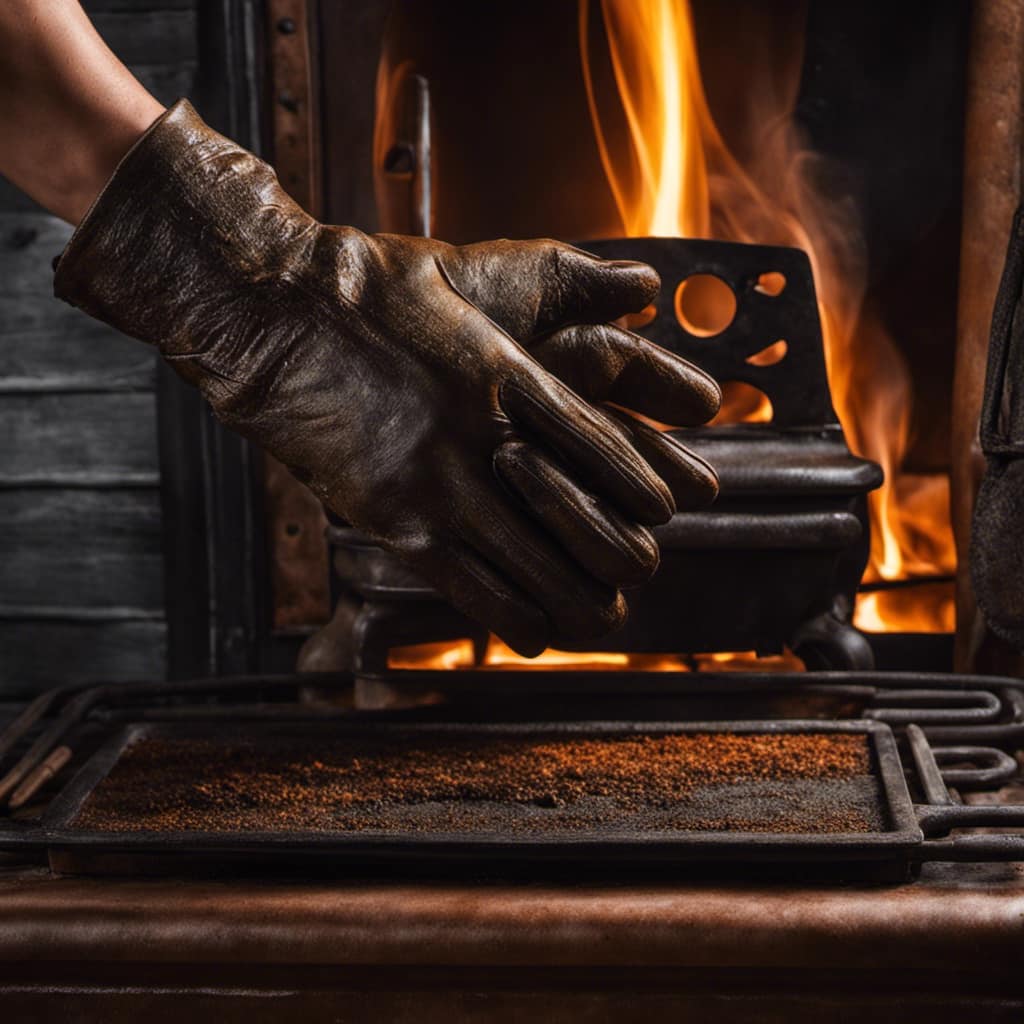
The size of the chimney pipe directly affects the performance of the wood stove. A pipe that’s too small can cause poor draft and inefficient combustion, leading to wasted fuel and reduced heat output. On the other hand, a pipe that’s too large can result in excessive draft, causing heat loss and potentially damaging the stove.
By accurately calculating the ideal chimney pipe size, you can optimize the efficiency of your wood stove and ensure maximum heat output. Factors such as the stove’s BTU rating, flue length, and the number of elbows in the pipe system must be taken into account for an accurate calculation.
Consulting a professional or using online calculators can help determine the proper size for your wood stove’s chimney pipe.
Common Mistakes to Avoid When Selecting a Chimney Pipe Size
The most common mistake to avoid when selecting a chimney pipe size is choosing one that’s too small, as it can lead to poor ventilation and inefficient combustion. Proper ventilation is crucial for the safe and efficient operation of a wood stove.
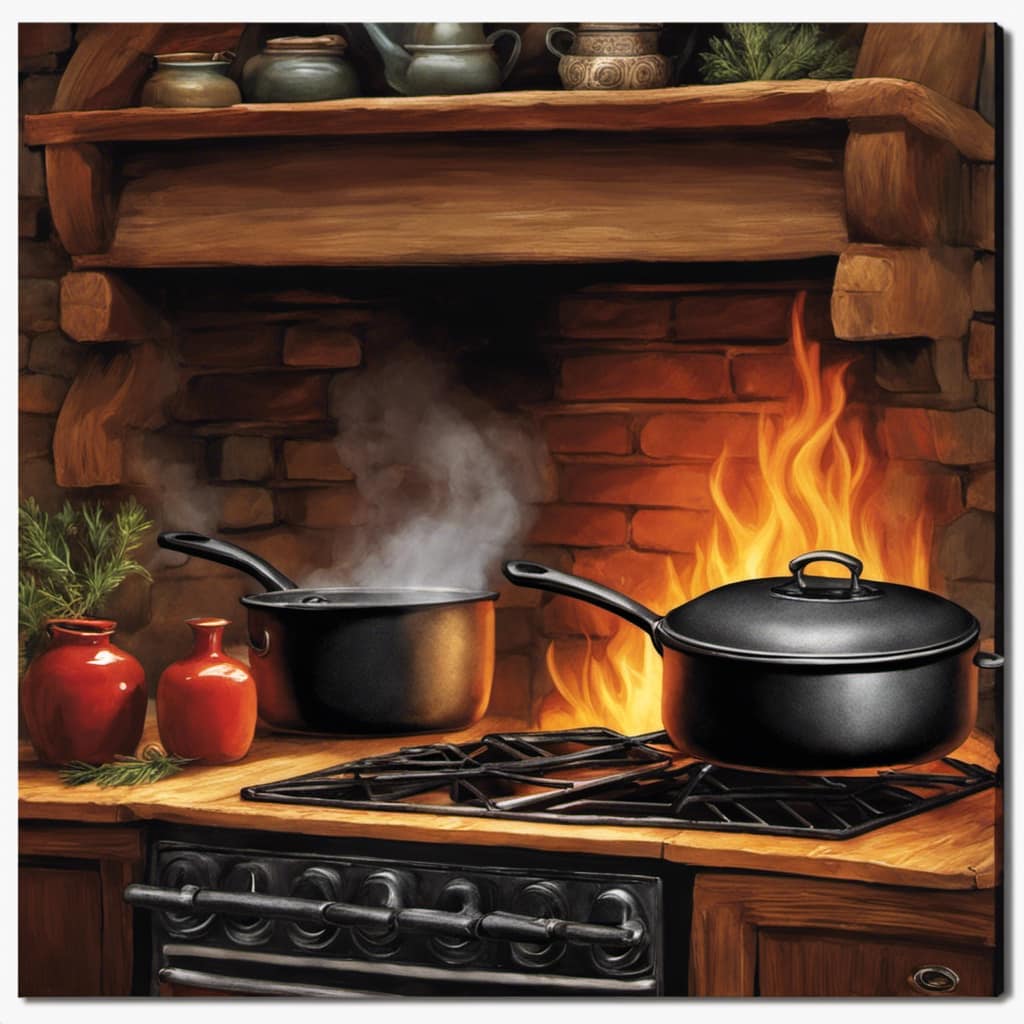
Here are three common mistakes to avoid when selecting a chimney pipe size:
Choosing a pipe size based solely on the stove’s output: It’s important to consider factors such as the stove’s design, the length and configuration of the chimney, and the height of the building.
Ignoring the recommended guidelines: Manufacturers provide specific guidelines for chimney pipe sizing based on the stove’s BTU output. Ignoring these recommendations can result in poor performance and increased risk of fires.
Underestimating the importance of a properly sized chimney: A chimney pipe that’s too small can cause smoke to back up into the room, leading to poor air quality and potential health hazards.
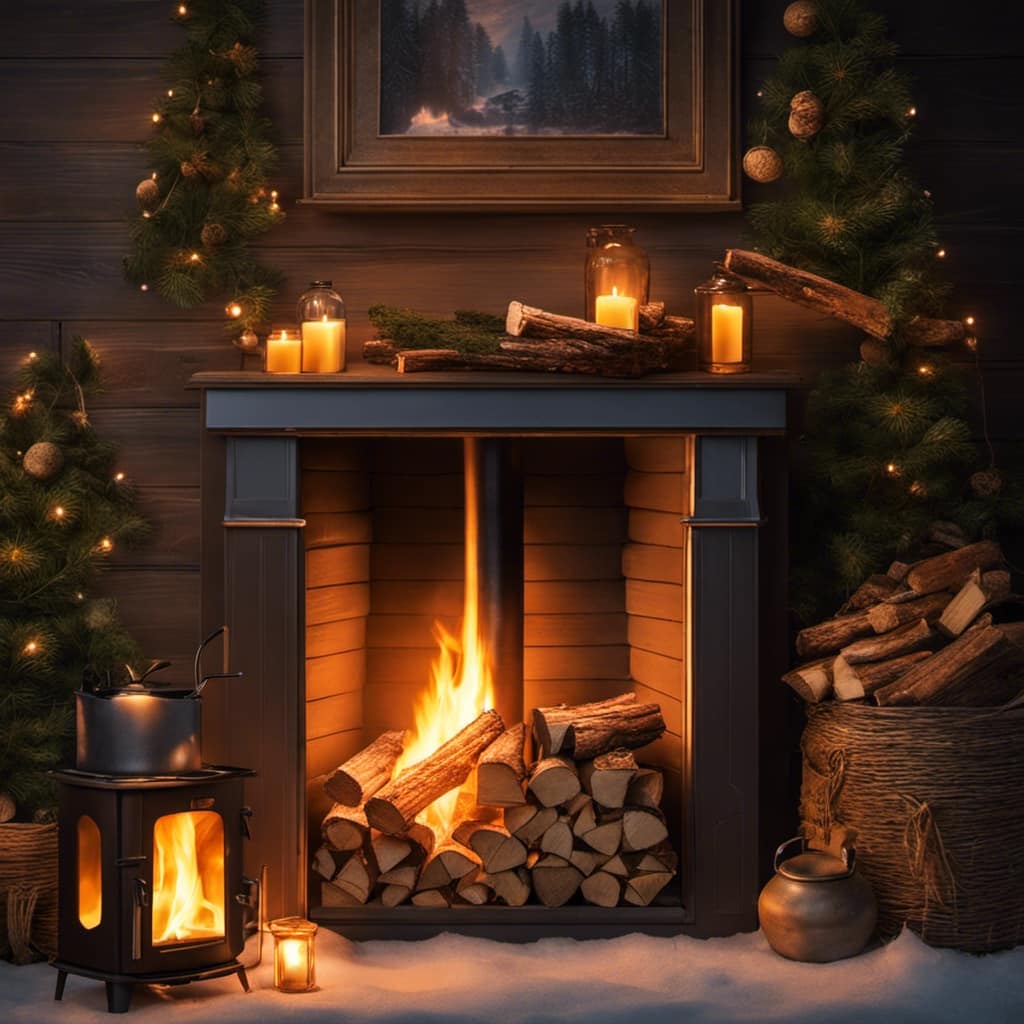
To ensure proper ventilation and efficient combustion, it’s essential to carefully choose the right size chimney pipe for your wood stove.
What Size Chimney Pipe Should I Choose for My Wood Stove?
When it comes to choosing stove pipe chimney for your wood stove, it’s important to consider the size of the chimney pipe. The appropriate size will ensure proper ventilation and efficient operation of your wood stove. Factors like the stove’s heat output and the chimney’s height will determine the right size for your setup.
Expert Tips for Choosing the Right Chimney Pipe for Your Wood Stove
When selecting the right chimney pipe for your wood stove, it’s important to follow expert tips and consider both the stove’s design and the height of the building. The chimney pipe materials and installation guidelines play a crucial role in the efficiency and safety of your wood stove. To help you make an informed decision, I have created a table that outlines the different chimney pipe materials and their respective advantages.
| Chimney Pipe Material | Advantages |
|---|---|
| Stainless Steel | Durable and resistant to corrosion |
| Double-Walled | Provides better insulation and reduces heat loss |
| Cast Iron | Excellent heat retention and durability |
| Aluminum | Lightweight and cost-effective |
| Galvanized Steel | Affordable and resistant to high temperatures |
Frequently Asked Questions
Can I Use a Larger Chimney Pipe Size Than Recommended for My Wood Stove?
Yes, using a larger chimney pipe size than recommended for your wood stove can lead to poor draft, inefficient combustion, and potential safety hazards. It is crucial to follow the manufacturer’s guidelines for optimal performance and safety.
How Often Should I Clean My Chimney Pipe?
I clean my chimney pipe annually to prevent buildup and ensure proper airflow. Signs of a dirty chimney pipe include excessive smoke, a strong odor, and visible creosote. Regular cleaning is essential for safety and efficiency.
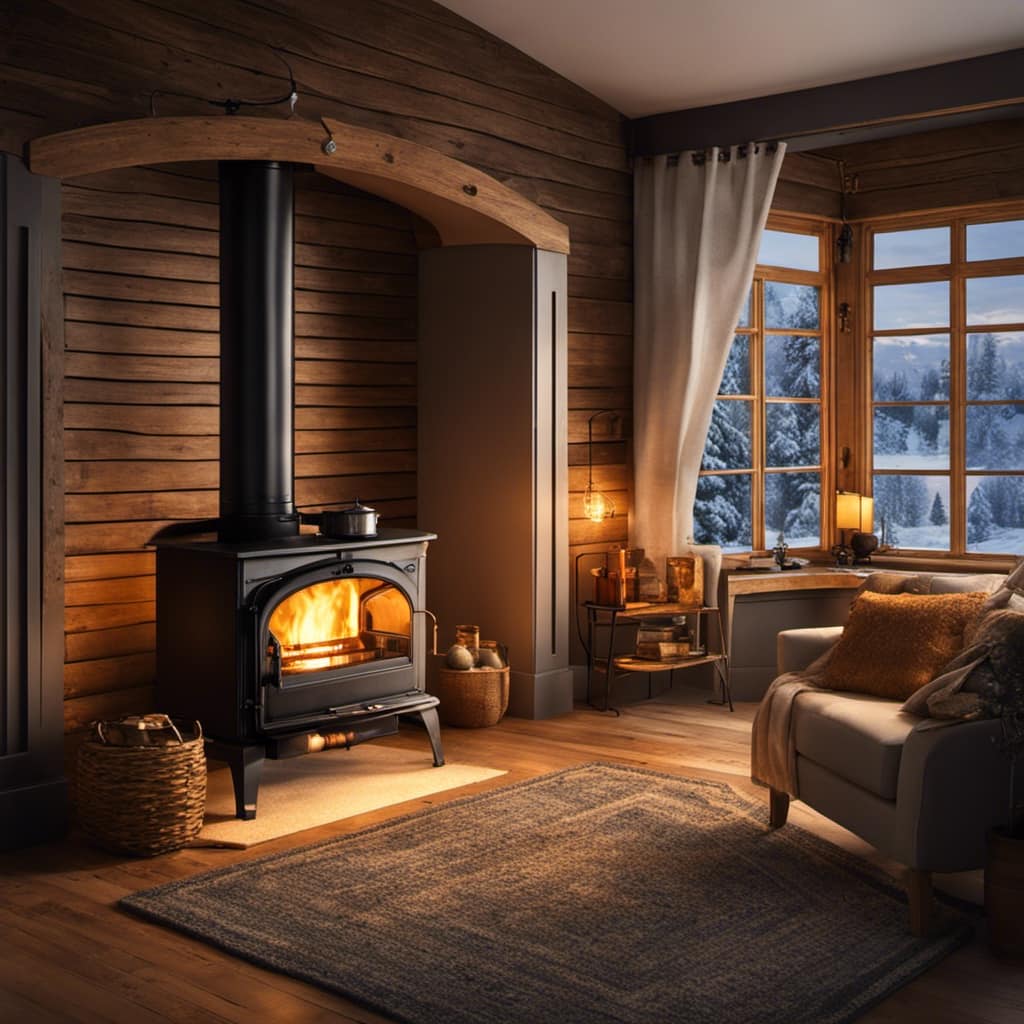
Are There Any Regulations or Codes That Dictate the Size of Chimney Pipe I Can Use?
There are regulations and codes that dictate the size of chimney pipe you can use. It’s important to consult these guidelines to ensure proper ventilation and safety for your wood stove.
What Is the Average Lifespan of a Chimney Pipe?
The average lifespan of a chimney pipe depends on various factors such as material quality, maintenance frequency, and usage. Regular inspections and cleanings can help prolong its lifespan, ensuring safe and efficient operation.
Can I Install a Wood Stove Without a Chimney Pipe?
I recently installed a wood stove without a chimney pipe by using alternative heating options. However, it’s important to note that safety precautions must be followed to avoid any potential hazards.
Conclusion
In conclusion, selecting the correct chimney pipe size for your wood stove is crucial for ensuring optimal ventilation and safety. By considering factors such as stove output, flue length, and local building codes, you can calculate the ideal chimney pipe size.
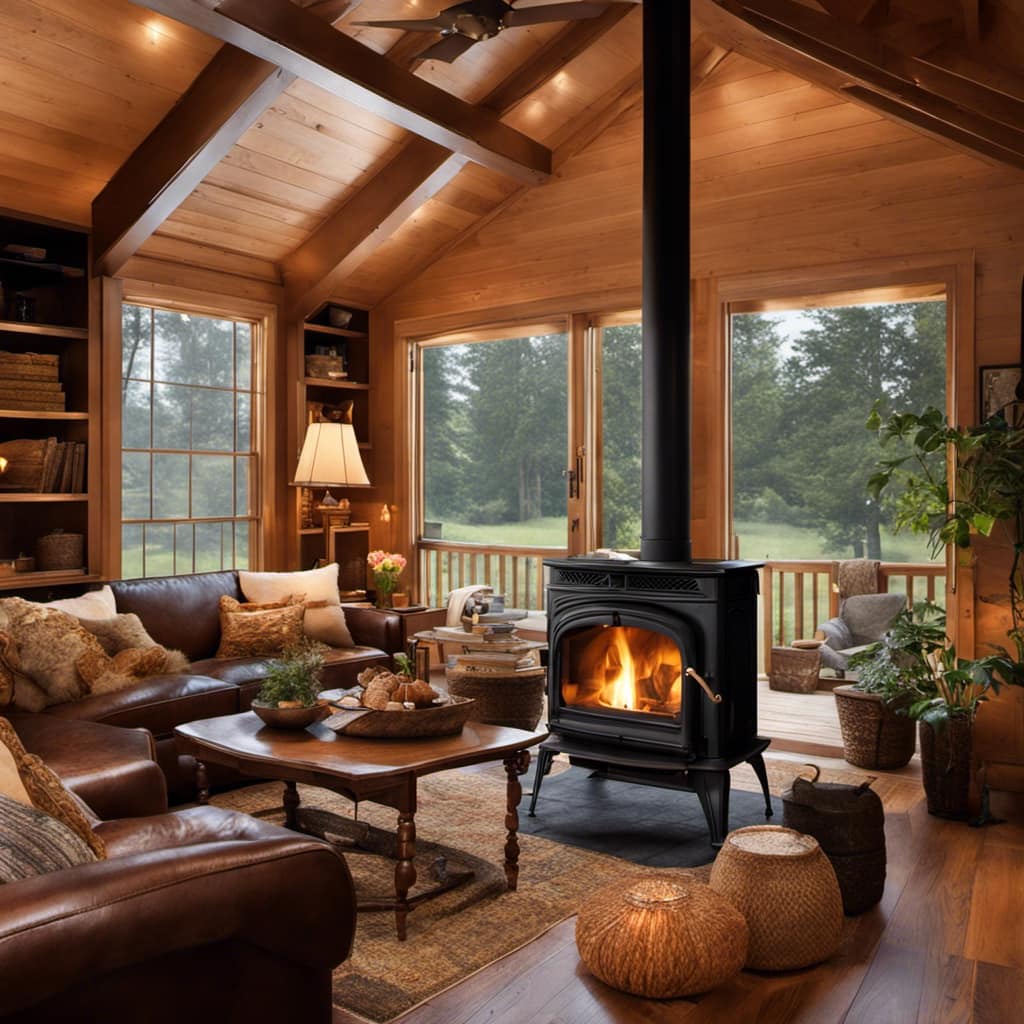
Avoid common mistakes, such as undersized pipes or improper installation, to prevent smoke backflow and potential fire hazards. Remember, ‘measure twice, cut once’ to ensure a proper fit and efficient wood stove operation.
Growing up surrounded by the vast beauty of nature, Sierra was always drawn to the call of the wild. While others sought the comfort of the familiar, she ventured out, embracing the unpredictable and finding stories in the heartbeat of nature.
At the epicenter of every remarkable venture lies a dynamic team—a fusion of diverse talents, visions, and passions. The essence of Best Small Wood Stoves is crafted and refined by such a trio: Sierra, Logan, and Terra. Their collective expertise has transformed the platform into a leading authority on small wood stoves, radiating warmth and knowledge in equal measure.




